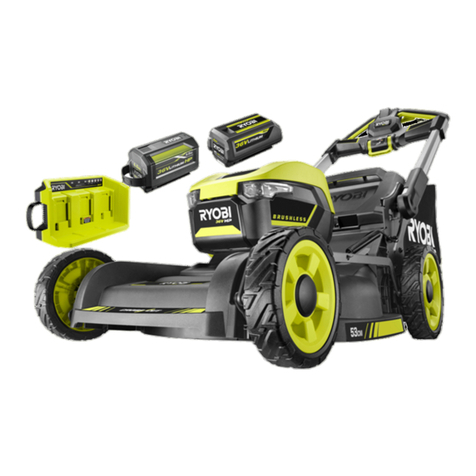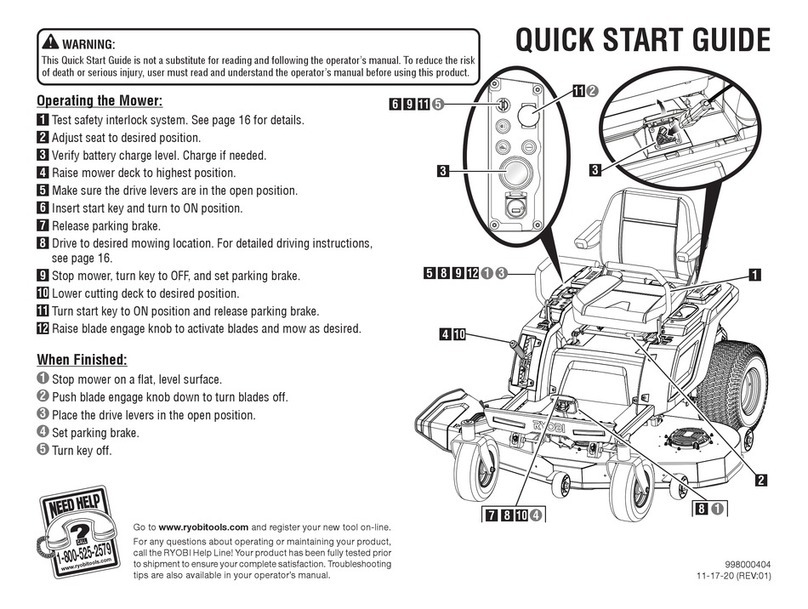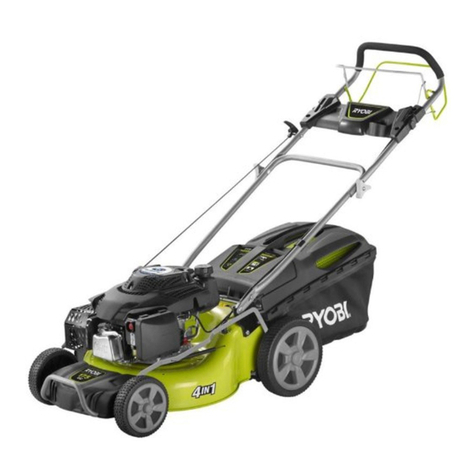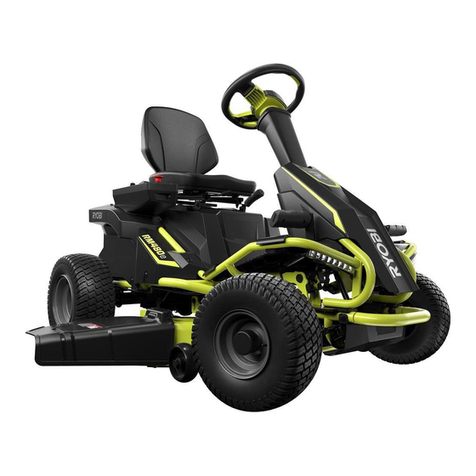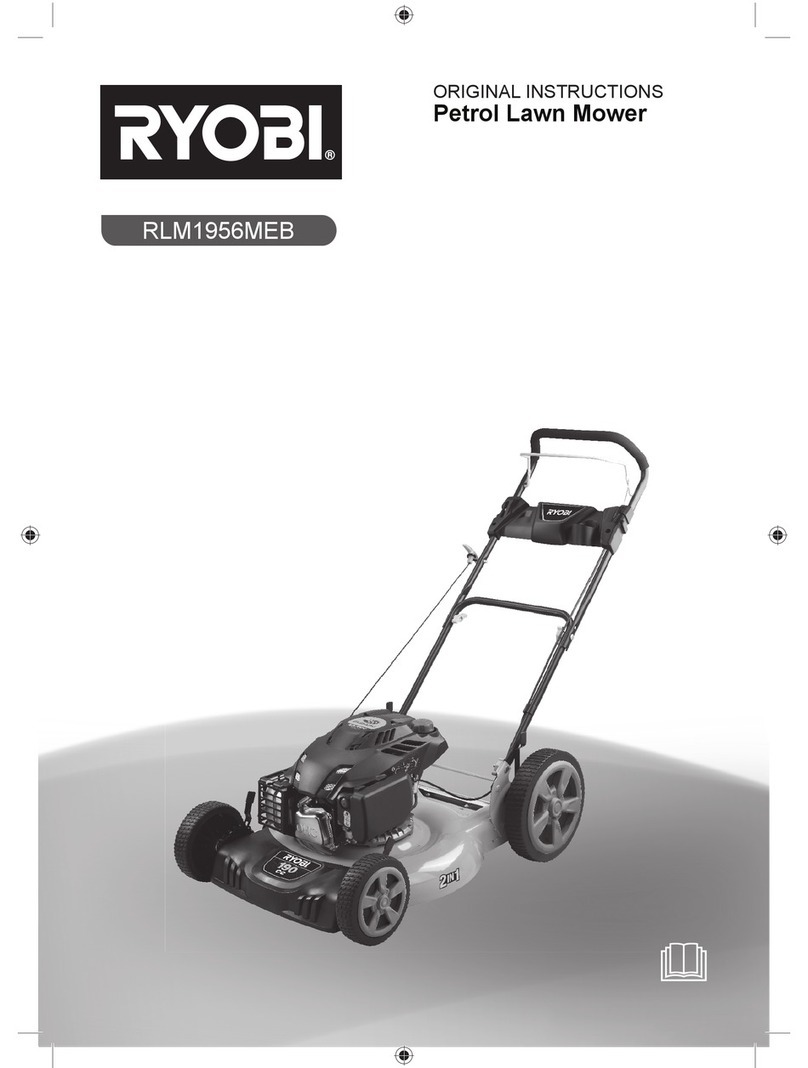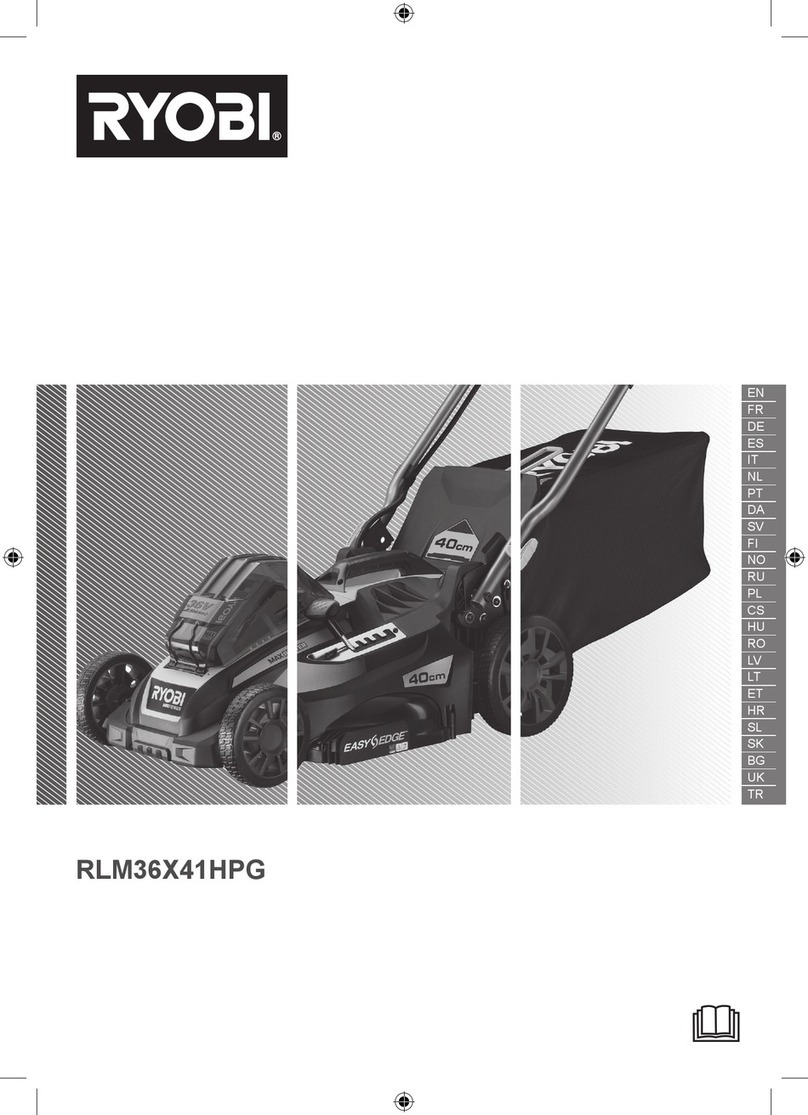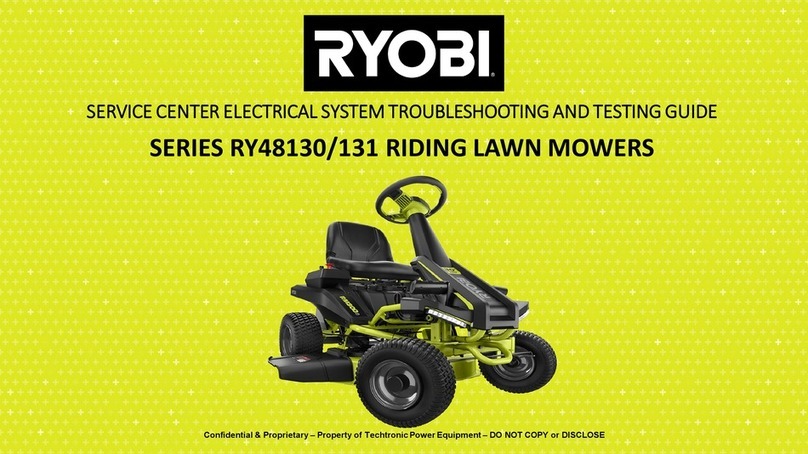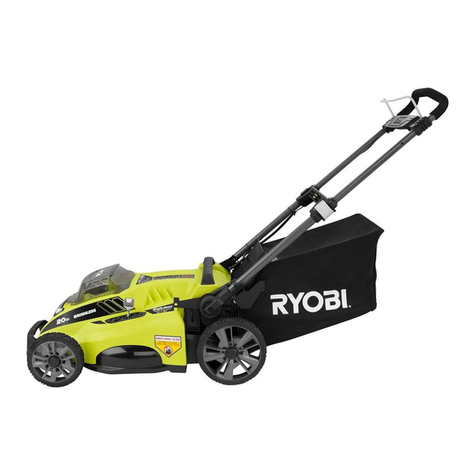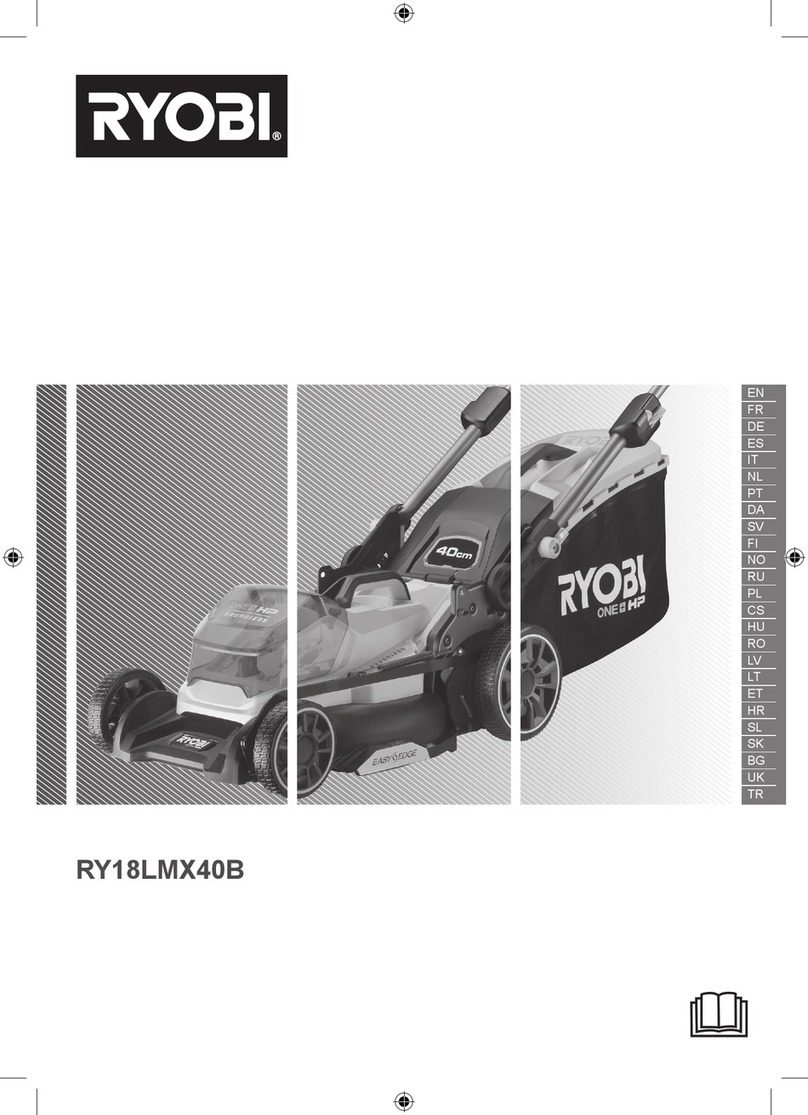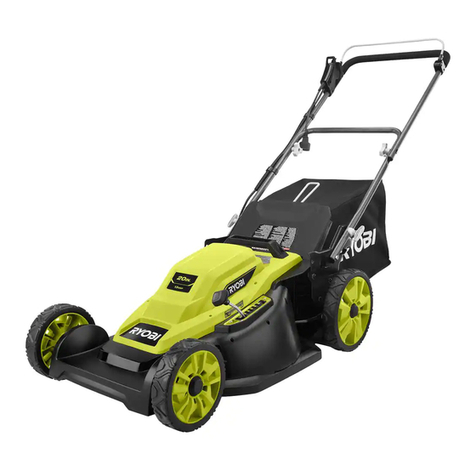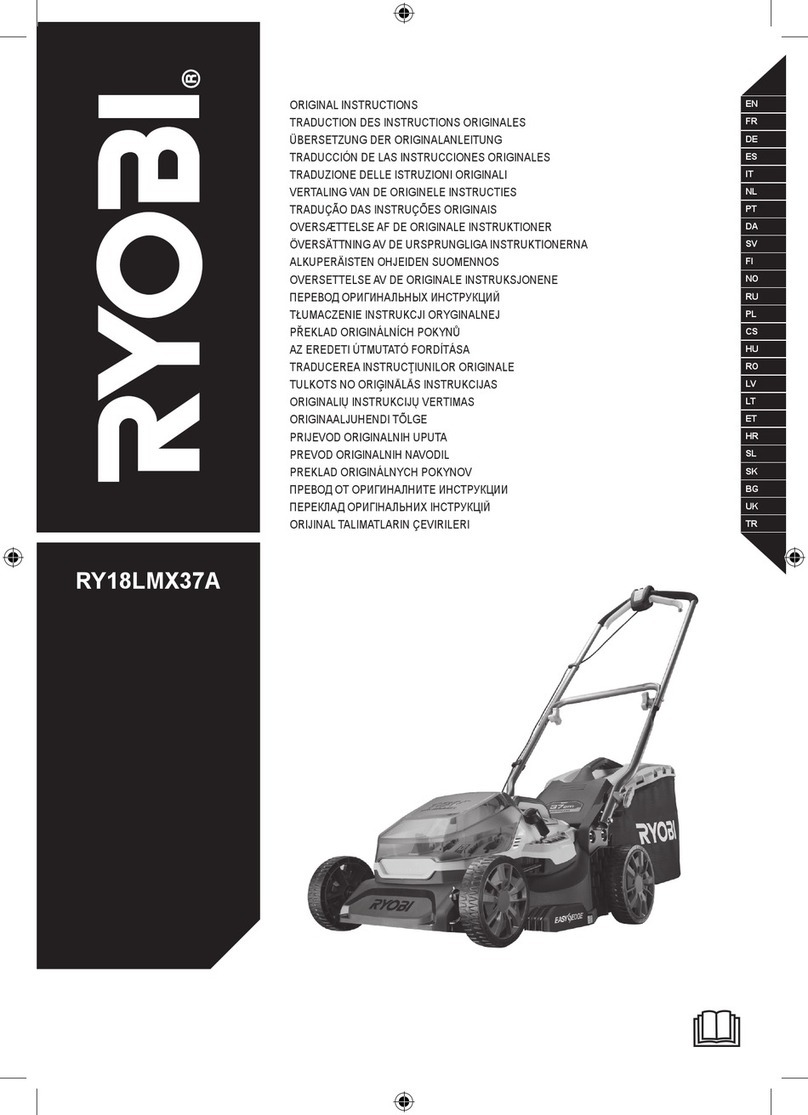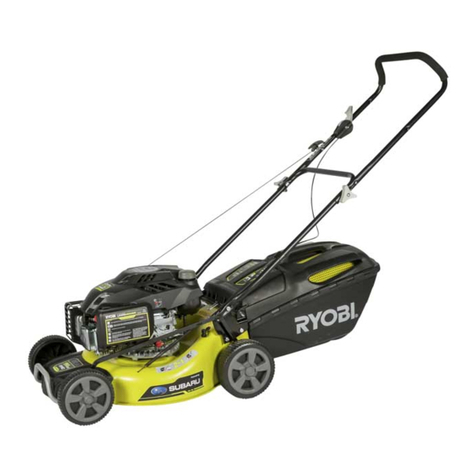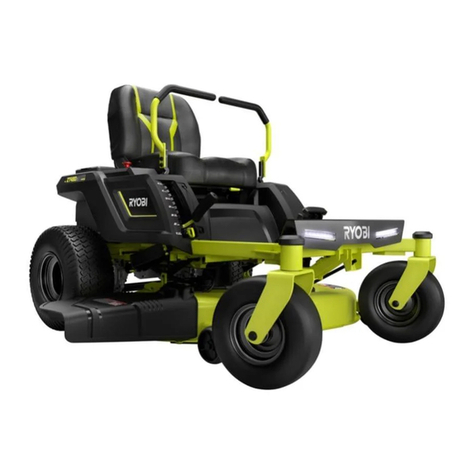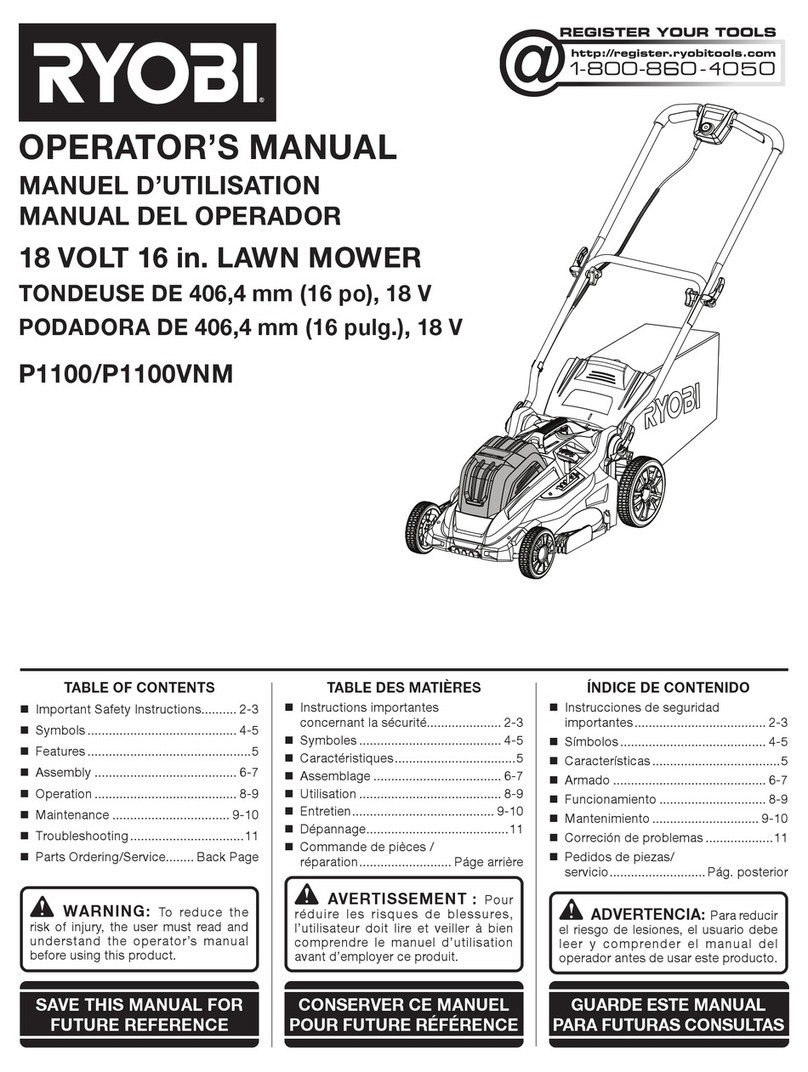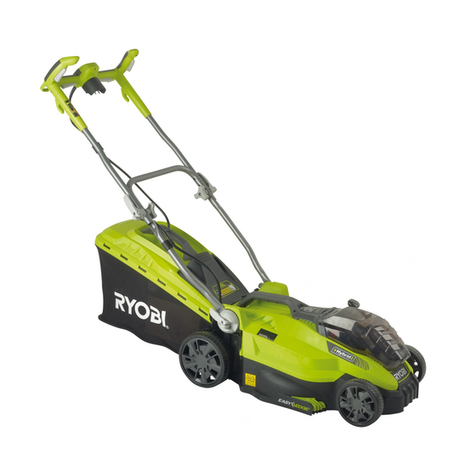
1
Thank you for buying a Ryobi lawn mower.
Your new lawn mower has been engineered and
manufacturer to Ryobi’s high standard for dependability,
ease of operation, and operator safety. Properly cared for,
it will give you years of rugged, trouble-free performance.
WARNING
Do not attempt to operate this mower until you have
read thoroughly and understood completely all
instructions, safety rules, etc. contained in this manual.
Failure to comply may result in accidents involving re
or serious personal injury. Save operator’s manual and
review frequently for continuing safe operation and
instructing others who may use this tool.
GENERAL SAFETY RULES
■The lawn mower is capable of amputating hands and
feet and throwing objects. Failure to observe all safety
instructions could result in serious injury or death.
■Never allow children or people unfamiliar with these
instructions to operate the mower. Local regulations
can restrict the age of the operator.
■Keep the area clear of all bystanders, children, and
pets while mowing. Stop machine if anyone enters the
area.
■Tragic accidents can occur if the operator is not alert to
the presence of children. Children are often attracted
to the machine and the mowing activity. Never assume
that children will remain where you last saw them.
●Keep children out of the mowing area and under
the watchful care of a responsible adult other than
the operator.
●Be alert and turn mower off if a child enters the
area.
●Never allow children to operate the machine.
●Use extra care when approaching blind corners,
shrubs, trees, or other objects that may block your
view of a child.
■Keep in mind that the operator or user is responsible
for accidents or hazards occurring to other people or
their property.
■Do not operate the equipment while barefoot or when
wearing sandals or similar lightweight footwear. Wear
protective footwear that will protect your feet and
improve your footing on slippery surfaces.
■Do not wear loose clothing or jewelry. They can be
caught in moving parts.
■Always wear safety glasses with side shields. Everyday
glasses have only impact resistant lenses. They are
NOT safety glasses. Following this rule will reduce the
risk of eye injury. Use face mask if operation is dusty.
■Wear safety glasses or goggles when operating this
product.
■Use the right appliance. Do not use the lawn mower for
any job except that for which it is intended.
■Clear the work area before each use. Remove all
objects such as rocks, sticks, wire, bones, toys, or
other objects which can be thrown by the blade. Stay
behind the handle when the engine is running.
■Replace any faulty mufflers.
■Before each use, visually inspect the mower to ensure
blades, blade bolts, and cutter assembly are not worn
or damaged.
■Do not operate the engine in a confined space
where dangerous carbon monoxide fumes can
collect. Carbon monoxide is a colourless, odourless
and extremely dangerous gas which can cause
unconsciousness or death.
■Operate the lawn mower only in daylight or good
artificial light.
■Stay alert, watch what you are doing, and use common
sense when operating the lawn mower. Do not operate
the mower while tired or under the influence of drugs,
alcohol, or medication. A moment of inattention while
operating the mower may result in serious personal
injury.
■Do not use the lawn mower in damp or wet conditions
or operate in the rain.
■Keep firm footing and balance. Do not overreach.
Overreaching can result in loss of balance.
■Mow across the face of slopes, never up and down.
Exercise extreme caution when changing direction on
slopes.
■Do not mow on wet grass or excessively steep slopes.
Poor footing could cause a slip and fall accident. Walk,
never run.
■Do not mow near drop-offs, ditches, or embankments.
■Do not pull the mower backward unless absolutely
necessary. If you must back the mower away from a
wall or obstruction, first look down and behind to avoid
tripping.
■Stop the engine if the mower has to be tilted for
transportation when crossing surfaces other than
grass, and when transporting the mower to and from
the area to be mowed.
■Do not operate the mower without the entire grass
catcher, or other safety protective devices in place
and working.
■Do not change the engine governor settings or
overspeed the engine.
■Start the engine carefully according to instructions and
with feet well away from the blade.
■Do not tilt the mower when starting the engine.
■Keep hands and feet away from cutting area. Keep
clear of the discharge opening at all times.
■Never pick up or carry a mower while the engine is
